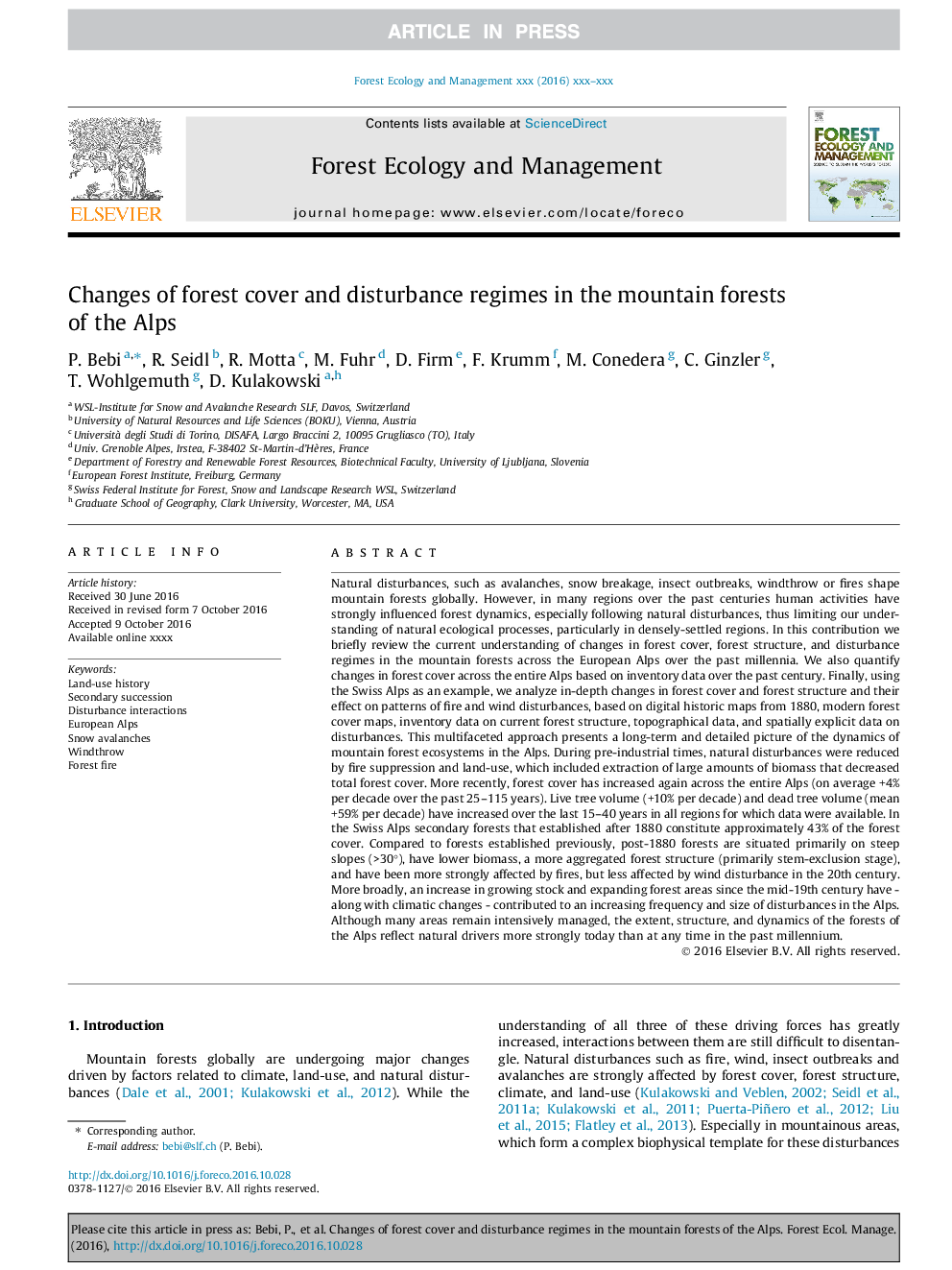| کد مقاله | کد نشریه | سال انتشار | مقاله انگلیسی | نسخه تمام متن |
|---|---|---|---|---|
| 4759531 | 1421370 | 2017 | 14 صفحه PDF | دانلود رایگان |
عنوان انگلیسی مقاله ISI
Changes of forest cover and disturbance regimes in the mountain forests of the Alps
ترجمه فارسی عنوان
تغییرات پوشش جنگل و رژیم های مزاحم در جنگل های کوه های آلپ
دانلود مقاله + سفارش ترجمه
دانلود مقاله ISI انگلیسی
رایگان برای ایرانیان
کلمات کلیدی
موضوعات مرتبط
علوم زیستی و بیوفناوری
علوم کشاورزی و بیولوژیک
بوم شناسی، تکامل، رفتار و سامانه شناسی
چکیده انگلیسی
Natural disturbances, such as avalanches, snow breakage, insect outbreaks, windthrow or fires shape mountain forests globally. However, in many regions over the past centuries human activities have strongly influenced forest dynamics, especially following natural disturbances, thus limiting our understanding of natural ecological processes, particularly in densely-settled regions. In this contribution we briefly review the current understanding of changes in forest cover, forest structure, and disturbance regimes in the mountain forests across the European Alps over the past millennia. We also quantify changes in forest cover across the entire Alps based on inventory data over the past century. Finally, using the Swiss Alps as an example, we analyze in-depth changes in forest cover and forest structure and their effect on patterns of fire and wind disturbances, based on digital historic maps from 1880, modern forest cover maps, inventory data on current forest structure, topographical data, and spatially explicit data on disturbances. This multifaceted approach presents a long-term and detailed picture of the dynamics of mountain forest ecosystems in the Alps. During pre-industrial times, natural disturbances were reduced by fire suppression and land-use, which included extraction of large amounts of biomass that decreased total forest cover. More recently, forest cover has increased again across the entire Alps (on average +4% per decade over the past 25-115 years). Live tree volume (+10% per decade) and dead tree volume (mean +59% per decade) have increased over the last 15-40 years in all regions for which data were available. In the Swiss Alps secondary forests that established after 1880 constitute approximately 43% of the forest cover. Compared to forests established previously, post-1880 forests are situated primarily on steep slopes (>30°), have lower biomass, a more aggregated forest structure (primarily stem-exclusion stage), and have been more strongly affected by fires, but less affected by wind disturbance in the 20th century. More broadly, an increase in growing stock and expanding forest areas since the mid-19th century have - along with climatic changes - contributed to an increasing frequency and size of disturbances in the Alps. Although many areas remain intensively managed, the extent, structure, and dynamics of the forests of the Alps reflect natural drivers more strongly today than at any time in the past millennium.
ناشر
Database: Elsevier - ScienceDirect (ساینس دایرکت)
Journal: Forest Ecology and Management - Volume 388, 15 March 2017, Pages 43-56
Journal: Forest Ecology and Management - Volume 388, 15 March 2017, Pages 43-56
نویسندگان
P. Bebi, R. Seidl, R. Motta, M. Fuhr, D. Firm, F. Krumm, M. Conedera, C. Ginzler, T. Wohlgemuth, D. Kulakowski,
